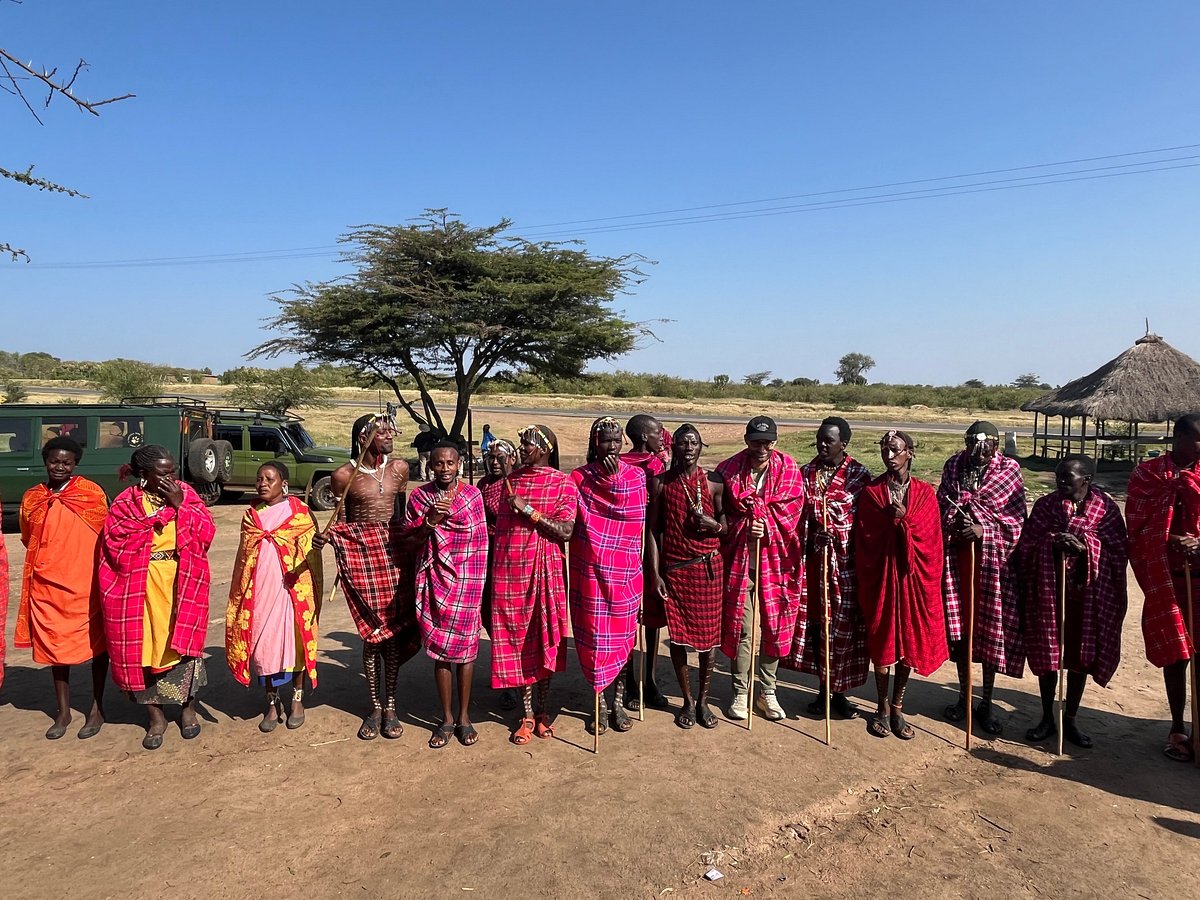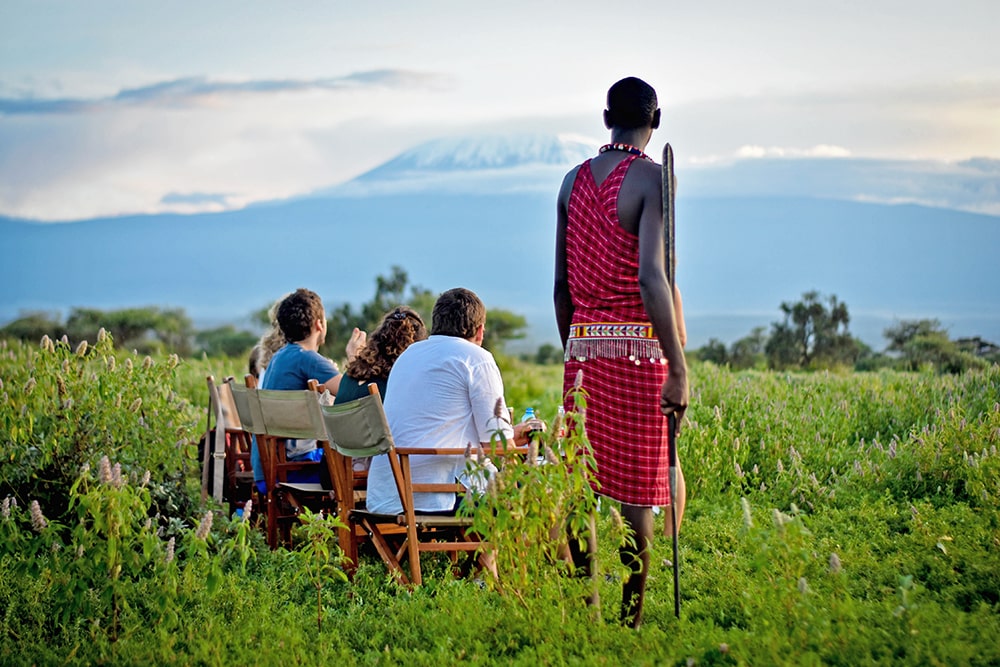Maasai Village Visit – An Authentic Cultural Experience in Kenya
Step Into the Heart of the Maasai Culture
A visit to a Maasai Village in Kenya is more than a stop on your safari — it’s an unforgettable cultural journey. Located near the Masai Mara National Reserve and other wildlife-rich areas like Amboseli and Tsavo, Samburu, the Maasai villages offer a unique opportunity to connect with one of Africa’s most famous tribes, known for their rich traditions, colorful dress, and deep connection to the land.
Whether you’re on a Masai Mara safari, an Amboseli Kenya safari, or a combined Kenya–Tanzania safari, adding a Maasai cultural visit brings meaning and depth to your adventure.

Who Are the Maasai?
The Maasai are a semi-nomadic ethnic group living in southern Kenya and northern Tanzania. Known for their bright red shukas, warrior traditions, and deep knowledge of the land, they have resisted many aspects of modernization to preserve their unique identity.
For centuries, the Maasai have lived alongside Africa’s wildlife — often in or near national parks like Masai Mara, Amboseli, and Ngorongoro. Their traditions emphasize bravery, community, livestock herding, and oral storytelling.
Why Visit a Maasai Village?
Visiting a Maasai village is both educational and interactive. A typical visit includes:
Visits are typically 1–2 hours and can be added seamlessly to a Masai Mara or Amboseli safari itinerary.
Learn how the Maasai live in their traditional enkangs (villages), constructed from mud, sticks, and dung.
Witness the world-famous Maasai jumping dance (adumu), accompanied by rhythmic singing and chanting.
Discover how the Maasai herd cattle, track wildlife, and thrive in the African savannah.
Your visit contributes directly to community projects, education, and cultural preservation.
Women and children are happy to share their routines and roles in the community.
What to Expect During Your Visit
Warm Maasai Welcome
Upon arrival, you’ll be greeted by Maasai warriors in their distinctive red shukas (robes) and beaded jewelry. You’ll join in a welcome song, then be invited into the village.
Guided Cultural Tour
Village Walkthrough – Explore the layout of the homestead and learn about family structures.
Hut Visit – Step inside a traditional Maasai hut (manyatta) and hear about daily life.
Craft Demonstrations – Watch beadwork artisans at work and see how tools and weapons are made.
Traditional Dance & Ceremony
Experience the Maasai adumu — the famous jumping dance — and learn its meaning in warrior culture.
Handcrafted Souvenirs
Shop for beautiful beadwork, spears, shields, and carvings — directly from the makers, ensuring your purchase benefits the community.

Best Time to Visit a Maasai Village
You can visit year-round, but combining your trip with the Great Wildebeest Migration (July–October in Masai Mara) or Amboseli’s clear Kilimanjaro views (January–February) makes it even more memorable.
How to Include a Maasai Village Visit in Your Safari
We offer Maasai cultural visits as an add-on to many of our Kenya safari packages, including:
Kenya Safari Packages with Maasai Village Visits
3 Days Tsavo East & Amboseli Safari Experience
4 Days “Big Five” Masai Mara safari
4 Days Lake Nakuru & Naivasha Masai Mara Safari
4 Days Tsavo East, Tsavo West & Amboseli Safari
5 Days Masai Mara Game Reserve & Amboseli safari tour
5 Days Amboseli , Lake Naivasha & Masai Mara safari tour
- Amboseli
- Naivasha
- Masai Mara
5 Days Ol Pejeta Lake Naivasha & Masai Mara safari tour
- Ol Pejeta
- Naivasha
- Masai Mara
6 Days Amboseli , Naivasha, Nakuru & Masai Mara safari tour
- Amboseli
- Naivasha
- Nakuru
- Masai Mara
6 Days Tsavo West, Amboseli , Naivasha & Masai Mara Safari safari tour
- Tsavo West
- Amboseli
- Naivasha
- Masai Mara
7 Days Amboseli, Lakes Naivasha and Nakuru, and the Masai Mara One week safari
- Amboseli
- L.Naivasha
- Nakuru
- Masai Mara
7 Days Samburu, Aberdares, Lakes Nakuru & Naivasha, and Masai Mara safari tour
- Amboseli
- Naivasha
- Masai Mara
7-Day Luxury Kenya Fly-In Safari
6 days Masai Mara,Amboseli Fly in Safari
Why Choose Annest Kenya Safaris for Your Maasai Village Experience?
Ethical Tourism – We work directly with village elders to ensure visits are respectful and beneficial to the community.
Expert Guides – Our guides speak English and Swahili, and many are from Maasai communities themselves.
Customizable Itineraries – Choose an overnight safari or a multi-day safari with cultural experiences included.
Traveler Tips for Your Maasai Village Visit
Dress modestly and respect local customs.
Ask for permission before taking photos.
Bring small cash for purchasing crafts (USD or Kenyan Shillings).
Book Your Maasai Village Experience Today
Call/WhatsApp: +254112458884
Email: bookings@annestkenyasafaris.com
Immerse yourself in the traditions of Kenya’s most iconic tribe. Add a Maasai Village visit to your safari and take home memories that will last a lifetime.
Frequently Asked Questions (FAQs) Maasai Village Experience
Typically 1–2 hours, but can be extended with activities like cattle herding or bead-making lessons.
Yes, we ensure visits support the community — which is exactly how we operate.
Absolutely — in fact, most of our Mara itineraries include it as a highlight.
A camera, comfortable walking shoes, and an open mind for cultural learning.
Yes! Children love the dances, songs, and colorful attire.

